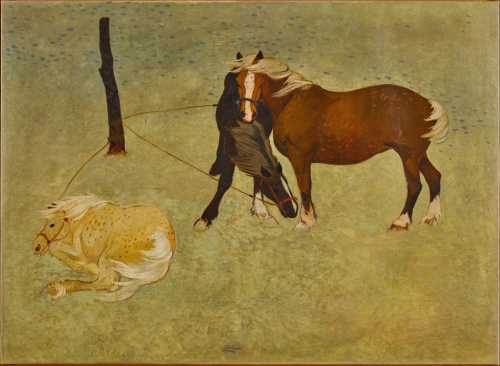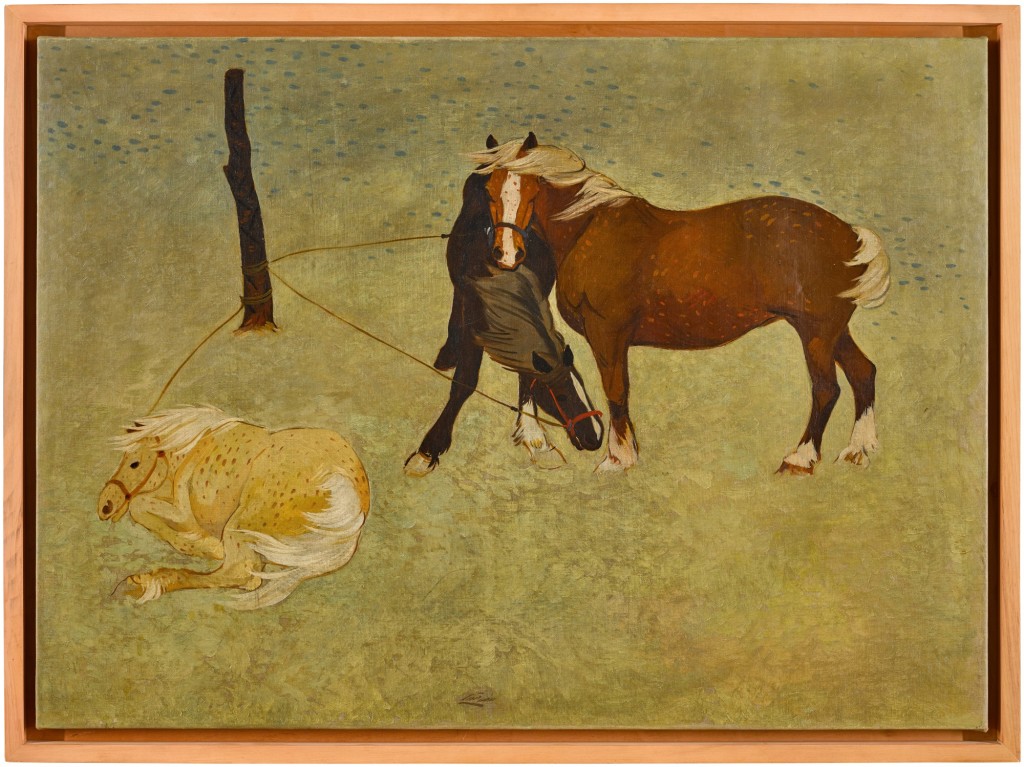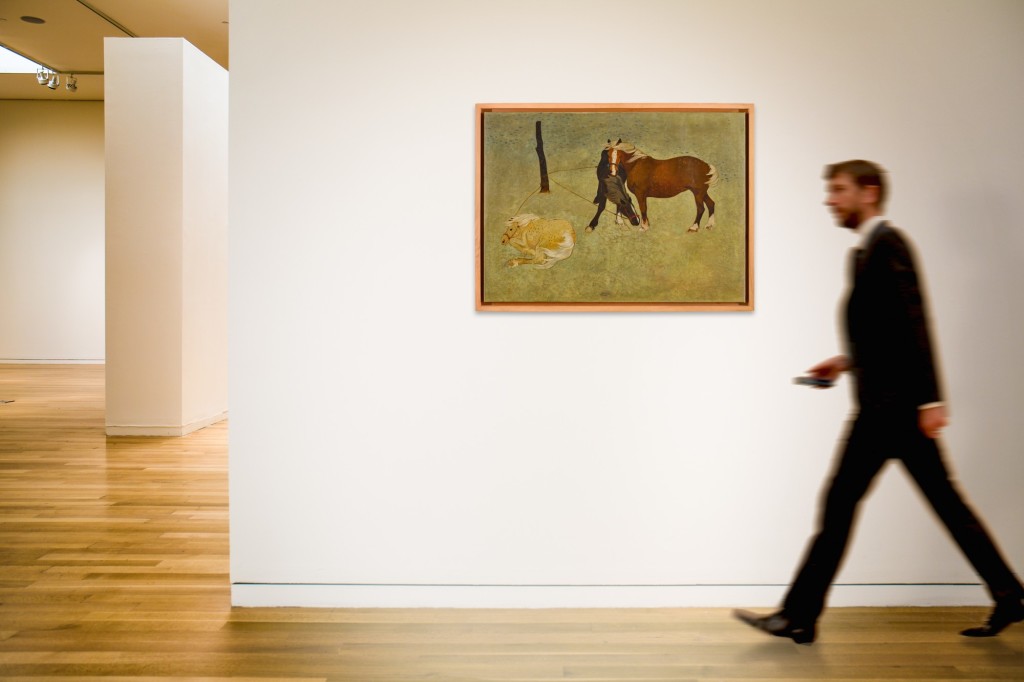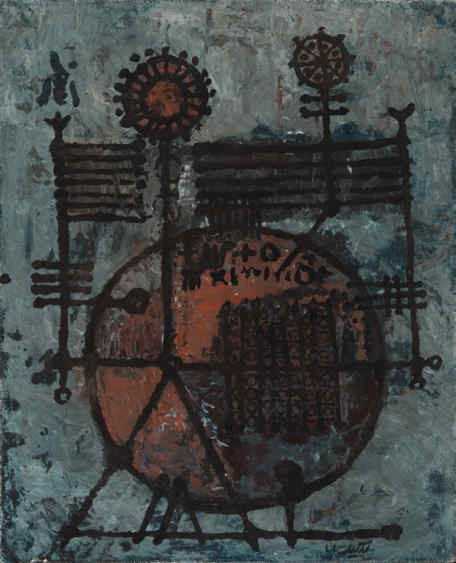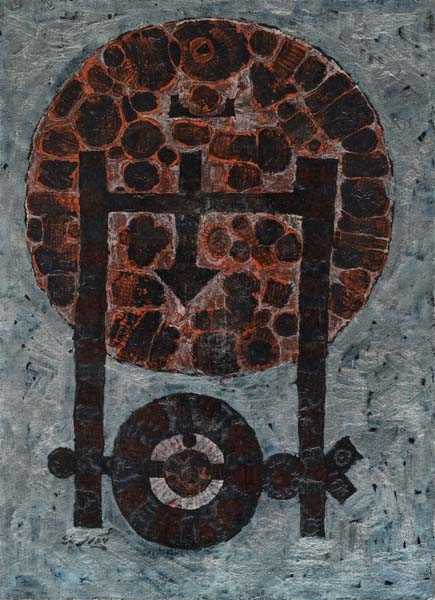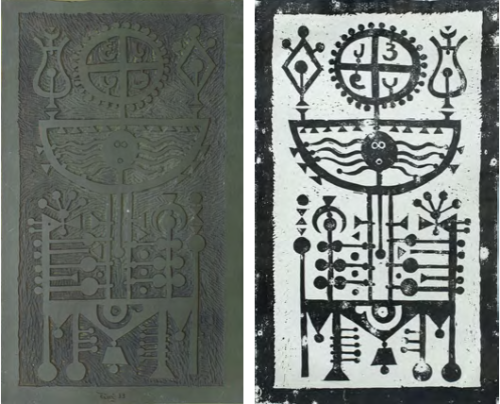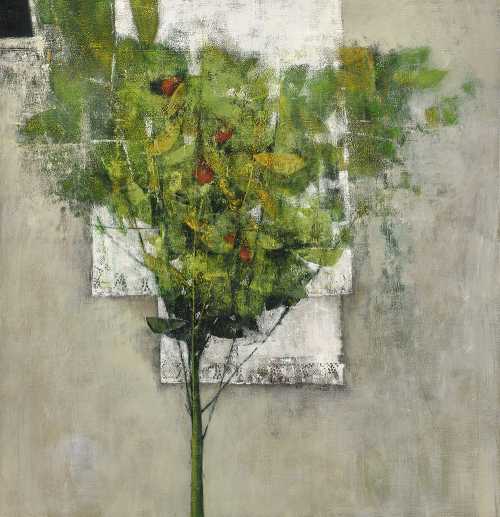- The Horses 1959
- Oil on canvas
- Painting
- 106.5 * 79.5 cm
- signed in Farsi
20 October 2021
Estimation
£70,000
96,592 USD
-
£90,000
124,189 USD
Unsold
Art Fair Histories
Artwork Description
"To free myself from logic and to arrive at a Self, I have to make use not of the classical but a crazy logic, an ineffable inner logic. It is through this seemingly unreasonable logic that the brilliant and main logic will emerge, whose very foundations are based on imagination. It is through such a window that the self gains power and determination to show its true essence to me."
- Mansour Ghandriz cited in: Ruyan Pakbaz, Ed., Mansour Qandriz - Selected Works From One Sun To Another, Tehran 2019
Mansour Ghandriz was born in 1936 in Tabriz; he grew up there and studied art with Esmail Bajlanlu. While still in high school, he was drawn to the progressive realist paintings of Ilya Repin (1844-1930), and the late nineteenth century Russian-Armenian seascape painter Ivan Aivazovsky. Later on, Ghandriz was introduced to European modernism and explored the traditions of Russian realists and European classical and figurative art. Having attended the School of Fine Arts and the Kamal-ol Mulk art society in Tehran after moving there in 1954, he found himself as part of the group of artists practicing in what has now become known as the style of the Saqqakhaneh School. He was pivotal in establishing the Talar-e Iran in 1964, an important venue for the growing group of Iranian modernist artists, and he collaborated and interacted with the best-known artists of that era. He participated in the 3rd and 4th Tehran Biennials and progressed from incorporating figurative techniques of old masters to his own unique brand of figurative abstraction. During this time, he was also deeply influenced by Matisse, Picasso, and Persian miniatures. After his untimely death in 1966, the Talar-e Iran was re-named after him, marking his important role in the growth of the artistic scene of the time. Ghandriz was undoubtedly considered a key figure amongst the creative talents at a time where increasingly artists were referring to their heritage and traditional or folkloric themes and motifs. Prior to his death, he had already turned to executing a unique, iconic semi-abstracted personal style, combining mystical symbols intertwined with traditional and modern elements.
This beautiful work is one of only two figurative pieces to come to auction. Originally bought by renowned artist Parviz Tanavoli as a gift for his wife, this painting is one of the finest examples of Ghandriz’s mastery of figuration; its delicate rendering showing clear stylistic influences from Persian miniatures. Adding to the richness and history of the painting, the reverse of the canvas shows a former painting. Often in Ghandriz’s early works, a lack of funds would mean he would use both sides of the canvas.
Despite his short life, Ghandriz has come to occupy a prominent place amongst Iranian modernists. His works were shown at the 5th Tehran Biennial, at Columbia University's Modern Painting of Iran show in 1968, in Paris in 1973, at Basel in 1976, at TMOCA's Retrospective of Saqqakhaneh Movement in 2003, and at a variety of other group shows.
More lots by Mansoor Ghandriz
Realized Price
74,260 USD
Min Estimate
51,085 USD
Max Estimate
69,969 USD
Average Artwork Worth
+37.848%
Average Growth of Artwork Worth
Sales Performance Against Estimates
Average & Median Sold Lot Value
2021 - 2025
Performance vs. Estimate
2021 - 2025
Sell-through Rate
2021 - 2025
Similar Artworks
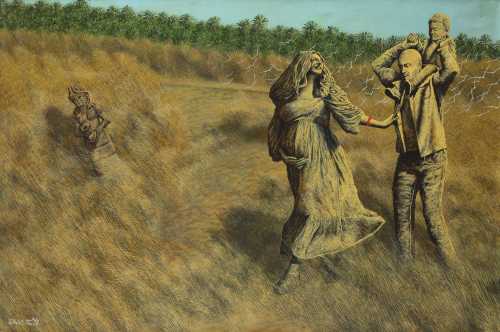
Untitled
Estimation
€5,000
5,882 USD
-
€8,000
9,412 USD
Realized Price
€4,500
5,294 USD
30.769%
Sell at
Sale Date
Millon & Associés
-
15 December 2025
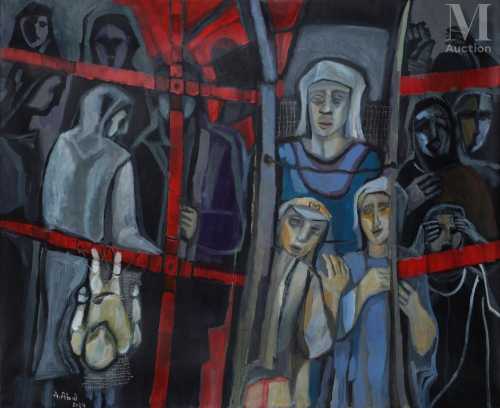
In the shadow of the agression
Estimation
€5,000
5,214 USD
-
€8,000
8,342 USD
Realized Price
€5,000
5,214 USD
23.077%
Sell at
Sale Date
Millon & Associés
-
19 December 2024
